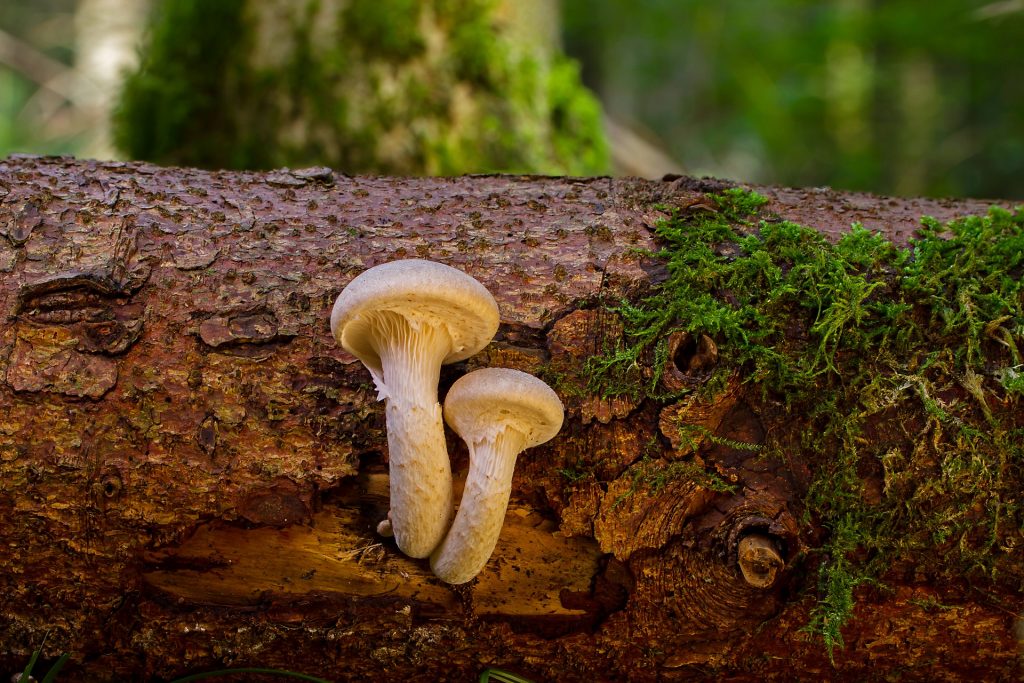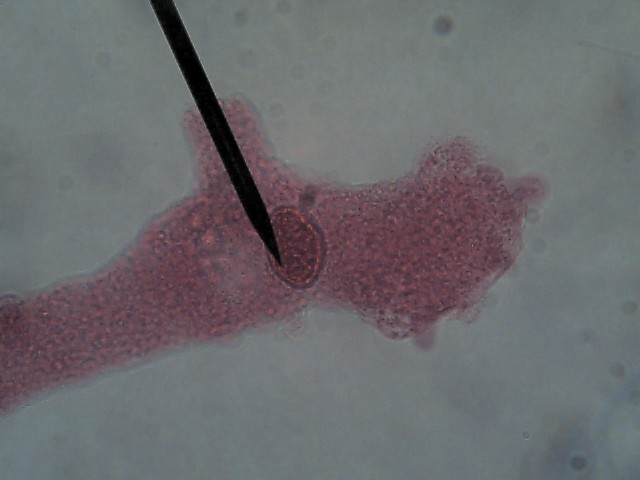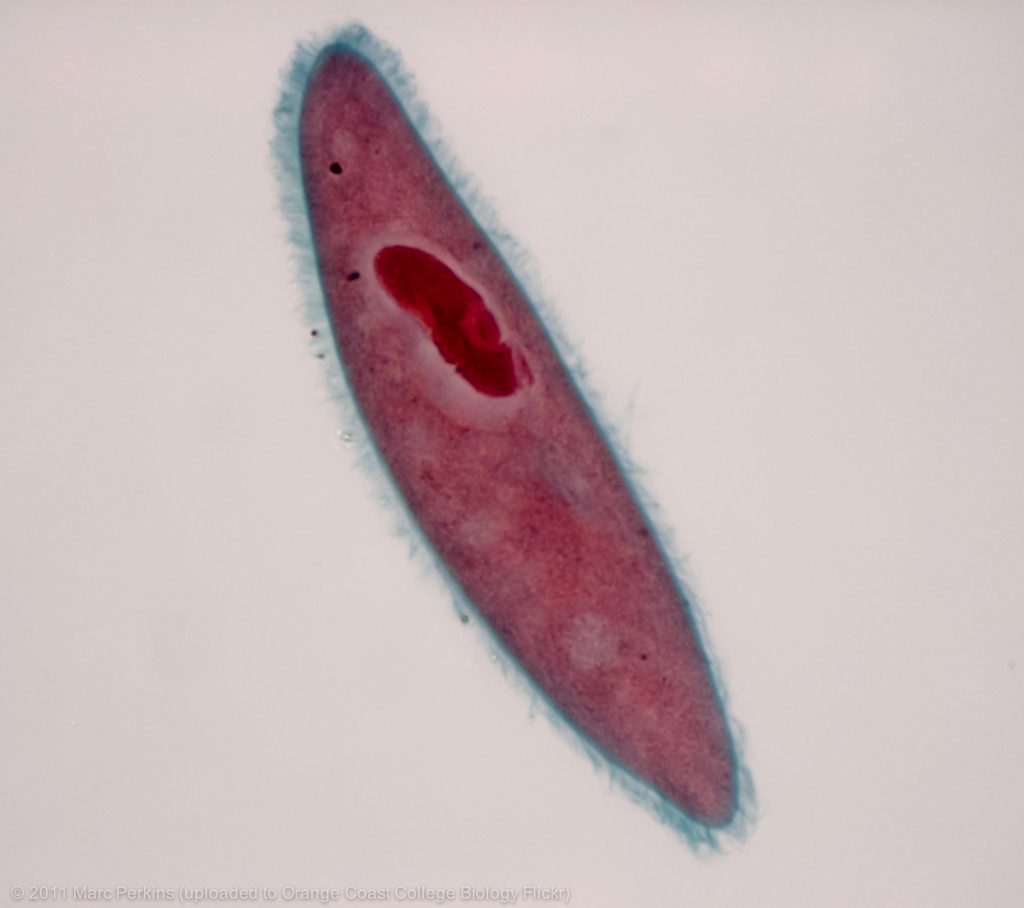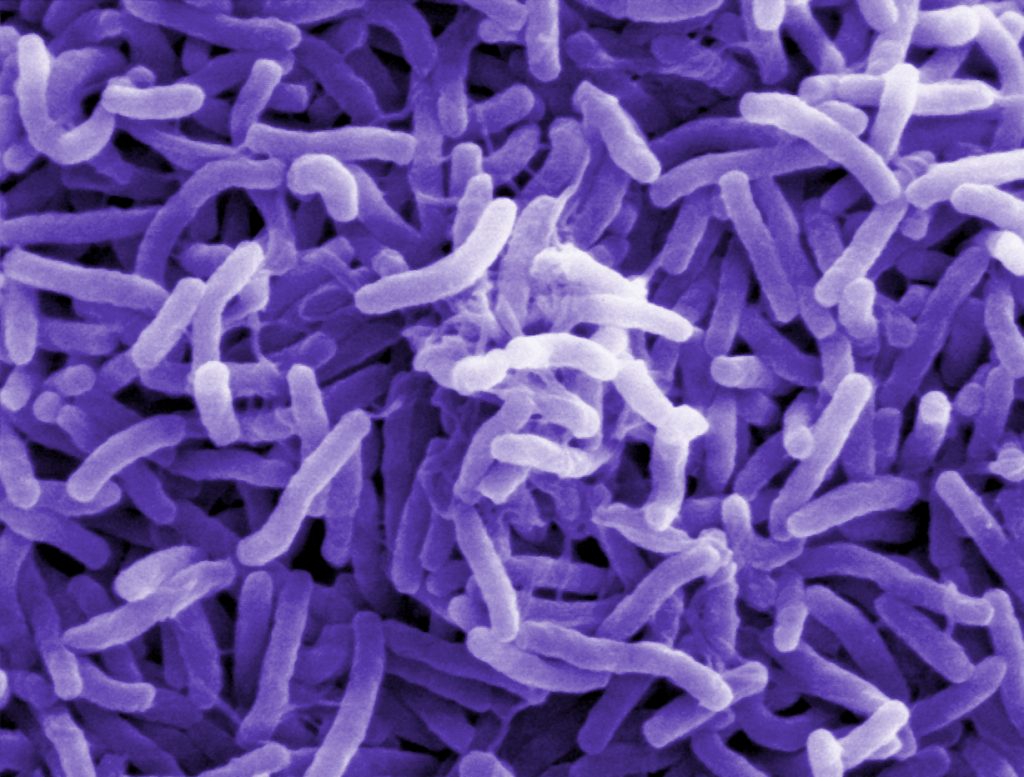If you look around you, you can see that every object or life form has a name. We always want to give names so that we can communicate with each other about our surroundings. People have tried to classify living organisms since the ancient times. Aristotle, a Greek philosopher, was one of the first that attempted classifying organisms based on their similarities, for example, whether they lived on land, water, or air. Thus, he divided them into two groups, animals and plants. Since then, there have been many classification systems. But one of the most well-developed ones is the Linnaean System, introduced by Carl Linnaeus, a Swedish scientist, in 1735. The Linnaean System has been a very important work that has contributed to the modern version of the classification of organisms.
The hierarchy of taxonomic ranks
The taxonomic system is a system used by taxonomists. Taxonomists are scientists working in the field of science that is involved in the description, identification, nomenclature, and classification of living things. Τhe purpose of their work is to give names to the organisms to enable communication among scientists from all over the world. Furthermore, it helps in the process of unraveling the evolutionary relations. To make it clearer, some of the questions that they try to answer are: Is it possible for two organisms to be close relatives even though they don’t have much in common? On the contrary, is it possible that two organisms share some common characteristics, although they are not closely related to each other? Who is the most recent common ancestor between two species? What happened in the meantime to make them so diverse?
These are some of the questions troubling taxonomists and many more scientists in similar fields of biology. As technology advances, new techniques emerge to make it easier for them to find the answers. As of now, we use the taxonomic system that is given in the picture below. This is influenced by the Linnaean system. It doesn’t mean of course that this system won’t change again if something else is discovered.
The modern classification system consists of the following taxonomic ranks:
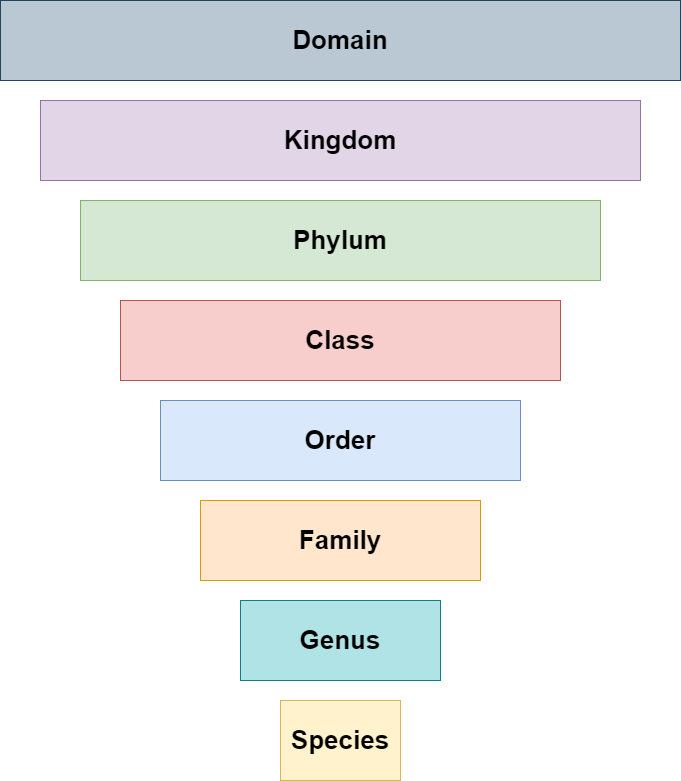
There are some funny and smart tricks to remember the names and sequence of the taxonomic ranks. For example, Dumb Kids Prefer Cheese Over Fried Green Spinach.
D: Domain, K: Kingdom, P: Phylum, C: Class, O: Order, F: Family, G: Genus, S: Species
Linnaeus developed the binomial system, which refers to the fact that every living organism is classified into a species, characterized by a unique name consisting of two words. As you will realize later, these names have nothing to do with what you call the organisms around you in your everyday life, like parrot, zebra, fly, or sunflower. What’s also important to know is that not all species that exist on Earth have been detected. It is estimated, there is a huge number of species, living either on land or the sea, that we know nothing about. Every time we discover a new species, we classify it using the above system and give it a unique name.
The five-kingdom system
Even though scientists had agreed on dividing living things into Kingdoms, they couldn’t find a consensus on the number of Kingdoms that should be used. There have been two-kingdom (animals and plants), three-kingdom, and four-kingdom systems until Robert Whittaker proposed the five-kingdom system in 1969, classifying organisms based on features like their cell structure and mode of nutrition. The five kingdoms are Animals, Plants, Fungi, Protists, and Monera, given in more detail below.
Animals: The organisms belonging to this kingdom are multicellular and consist of eukaryotic cells that do not have a cell wall. They are heterotrophs, meaning they cannot produce their own food. Thus, they gain their nutrients by feeding on other organisms. They are also mostly motile. A few examples of animals are sponges, starfish, insects, amphibians, birds, and mammals.
On the right: Sea turtle (Image by David Mark from Pixabay)
Plants: Members of the Plant Kingdom are multicellular organisms, consisting of eukaryotic cells that are surrounded by a cell wall made of cellulose. They are autotrophs, they use their chloroplasts to photosynthesize, thus making their own food. They are non-motile organisms. There are many examples of plants, but maybe the ones you are most familiar with are the flowering plants.
On the right: Silver brake fern (Image by zoosnow from Pixabay)
Fungi: These are eukaryotic organisms that can be either unicellular or multicellular. An example of unicellular fungi is the yeast that you might have heard is used in baking. Multicellular fungi examples are molds and mushrooms. Their cells have a cell wall that is made of chitin, and they are non-motile organisms. They are heterotrophic organisms; therefore, they find nutrients from their environment. They can be divided into three groups:
- Saprophytic fungi, that decompose dead organic matter,
- Parasitic fungi, that parasitize on other organisms and take food from them and
- Symbiotic fungi, that grow on other organisms with both organisms benefiting from this relationship.
On the right: Mushrooms (Image by adege from Pixabay)
Protists: These are unicellular, eukaryotic organisms. They can move around using pseudopodia, flagella, or cilia. Protists can be either autotrophs or heterotrophs. Two well-known protists are amoeba, which changes its shape, and plasmodium, which causes malaria. Others are diatoms, dinoflagellates, and others.
On the right: Paramecium (Image by Marc Perkins from Flickr under a Creative Commons Attribution-NonCommercial 2.0 Generic License, no changes were made)
Monera: This is the kingdom that includes all of the prokaryotic organisms. They are unicellular organisms. They can either have a cell wall or not. Some of them are autotrophs, while others are heterotrophic organisms. Bacteria and Archaea belong to this kingdom.
On the right: Extremophiles, microbes living in extreme conditions (Image by Steve Jurvetson from Flickr under a Creative Commons Attribution 2.0 Generic License, no changes were made)
The three-domain system
Most taxonomists had tried to classify organisms based on their appearance. However, the observation of their physical features was not enough to unravel the relations among them. Many organisms that appeared to be quite similar weren’t necessarily closely related when it came to evolution. The advancement of molecular biology and genetics allowed scientists to study similarities and differences in their DNA and other molecules. In 1990, Carl Woese studied the relationships among living things by comparing their rRNA. rRNA is the ribosomal RNA, a very important molecule that participates in the structuring of ribosomes for protein synthesis. The results of this study showed that not all prokaryotic organisms were the same. There were a lot of differences not only between eukaryotes and prokaryotes but also between Bacteria and Archaea. Consequently, Woese introduced another taxonomic rank, higher than the Kingdom, which was called Domain. This way, there are three domains: Bacteria, Archaea, and Eukarya. That means Bacteria and Archaea are grouped into different categories. This classification has caused confusion when it comes to the division into kingdoms. Some scientists prefer splitting the Monera kingdom into two kingdoms; Eubacteria (true Bacteria) and Archaebacteria (Archaea) while others still use the five-kingdom system.
Bacteria: This domain consists of all the prokaryotic organisms minus the Archaea. Their cell wall is made of peptidoglycan. You might have linked the word bacteria with something that is negative, dangerous. This isn’t always the case though. There are, indeed, some bacteria that are characterized as pathogens, such as Streptococcus or Salmonella, but there is also a great number of bacteria that are not a threat to our health. Some of them are actually beneficial and essential for our bodies.
Archaea: This domain includes all of the prokaryotic organisms minus the Bacteria. Their cell wall is not made of peptidoglycan, an important differentiation from Bacteria. Some of them live in mild environments while others have the ability to withstand extreme conditions such as very high temperatures or highly acidic environments. These are classified into a phylum called Crenarchaeota. There is another group of Archaea, the Euryarchaeota, that produce methane as a byproduct of their metabolism.
Eukarya: The Eukarya domain consists of all the eukaryotic organisms. Plants, Animals, Fungi, and Protists belong to this domain.
Two examples of organism classification
We learned earlier that the binomial system, introduced by Linnaeus, names each species using two parts. These are the generic name that characterizes the genus and the specific epithet that along with the genus, identifies the species. Both parts are in Latin and are written in italics. The names of the higher taxonomic ranks are Latin words as well but are not written in italics. Let’s look at two examples of classification at the following table and discuss what information we can get form it. We compare the classification of two animals, the domestic cat and a poisonous snake, the nose-horned viper.
| Domestic cat | Nose-horned viper | |
| Domain | Eukarya | Eukarya |
| Kingdom | Animalia | Animalia |
| Phylum | Chordata | Chordata |
| Class | Mammalia | Reptilia |
| Order | Carnivora | Squamata |
| Family | Felidae | Viperidae |
| Genus | Felis | Vipera |
| Species | Felis catus | Vipera ammodytes |
We can see that the three highest ranks are the same in the two classifications. Both organisms are eukaryotes and belong to the animal kingdom. Furthermore, they are classified as Chordata, which in simple words, means they have a backbone. We notice that below the Phylum rank, they start differentiating. The cat is a mammal; it has mammary glands, whereas the snake is a reptile, like lizards and crocodiles. If we go on and compare the rest of the taxonomic ranks, we will realize that these two organisms present numerous differences. Therefore, we understand that as we move from higher to lower taxonomic ranks, we divide the organisms into smaller and more specialized groups. That means, for example, that if two organisms belong to the same kingdom, they have fewer features in common than two organisms that belong to the same genus. Additionally, this means that the latter two organisms evolved more recently from their common ancestor than the first two.






